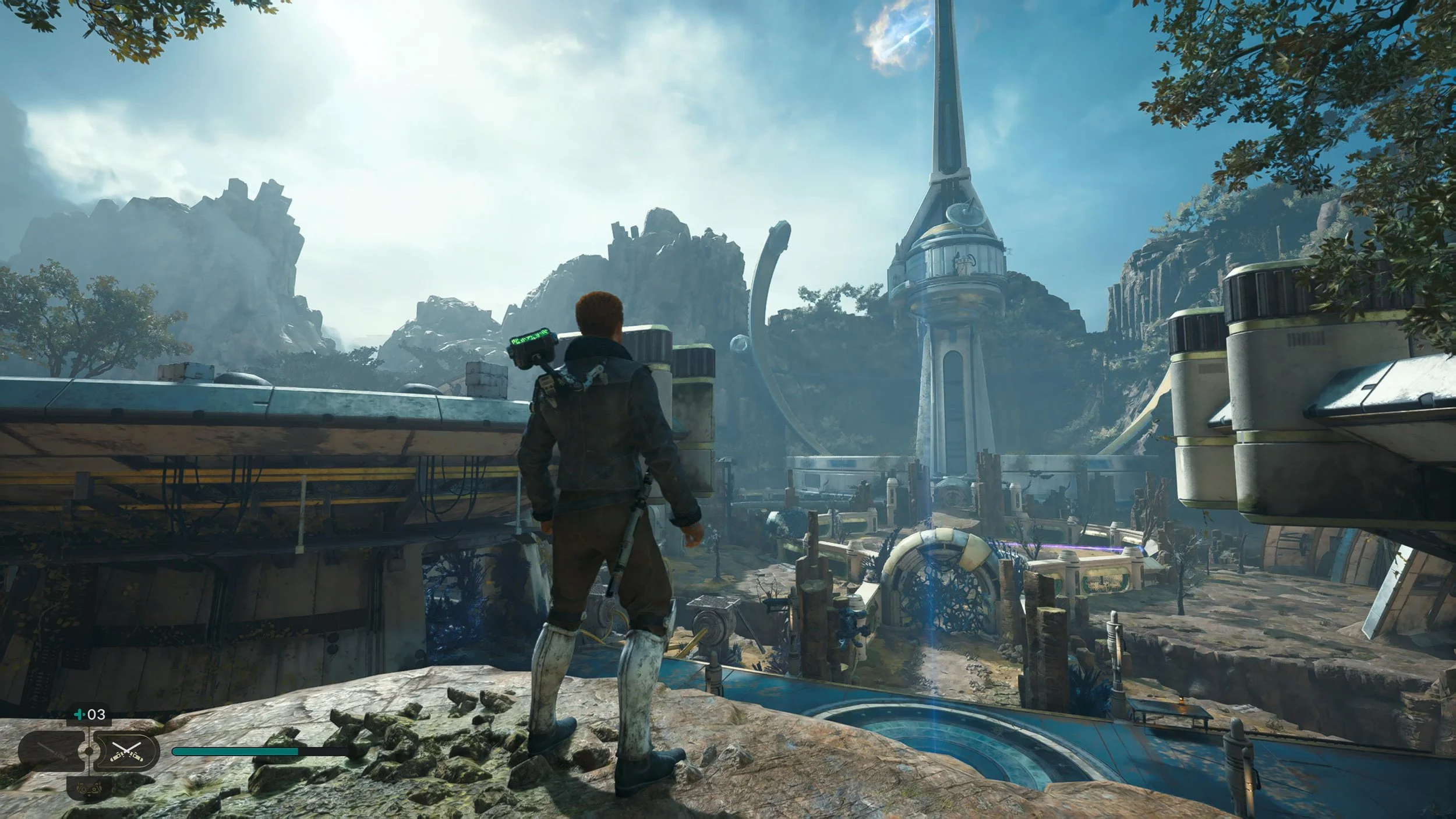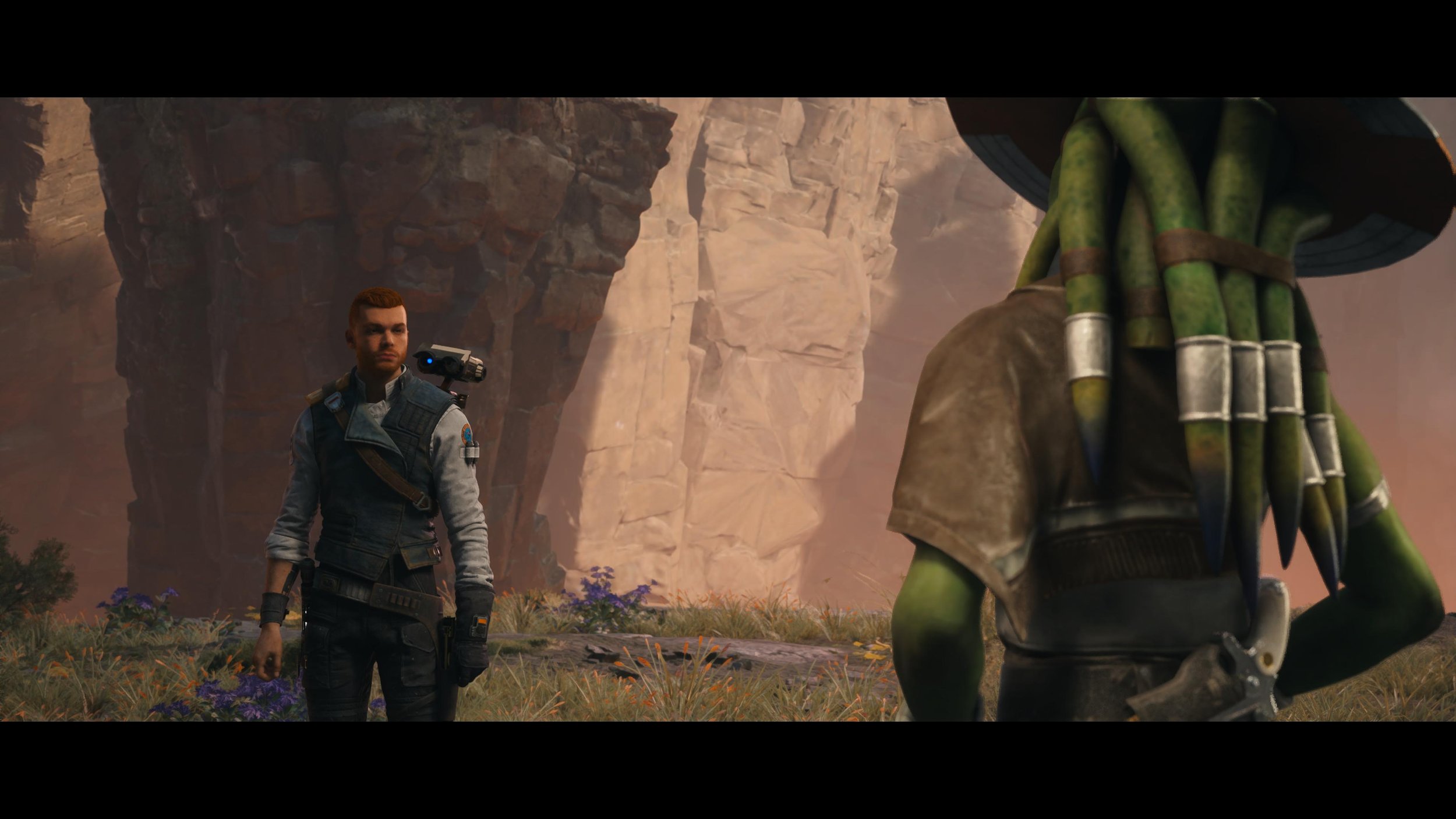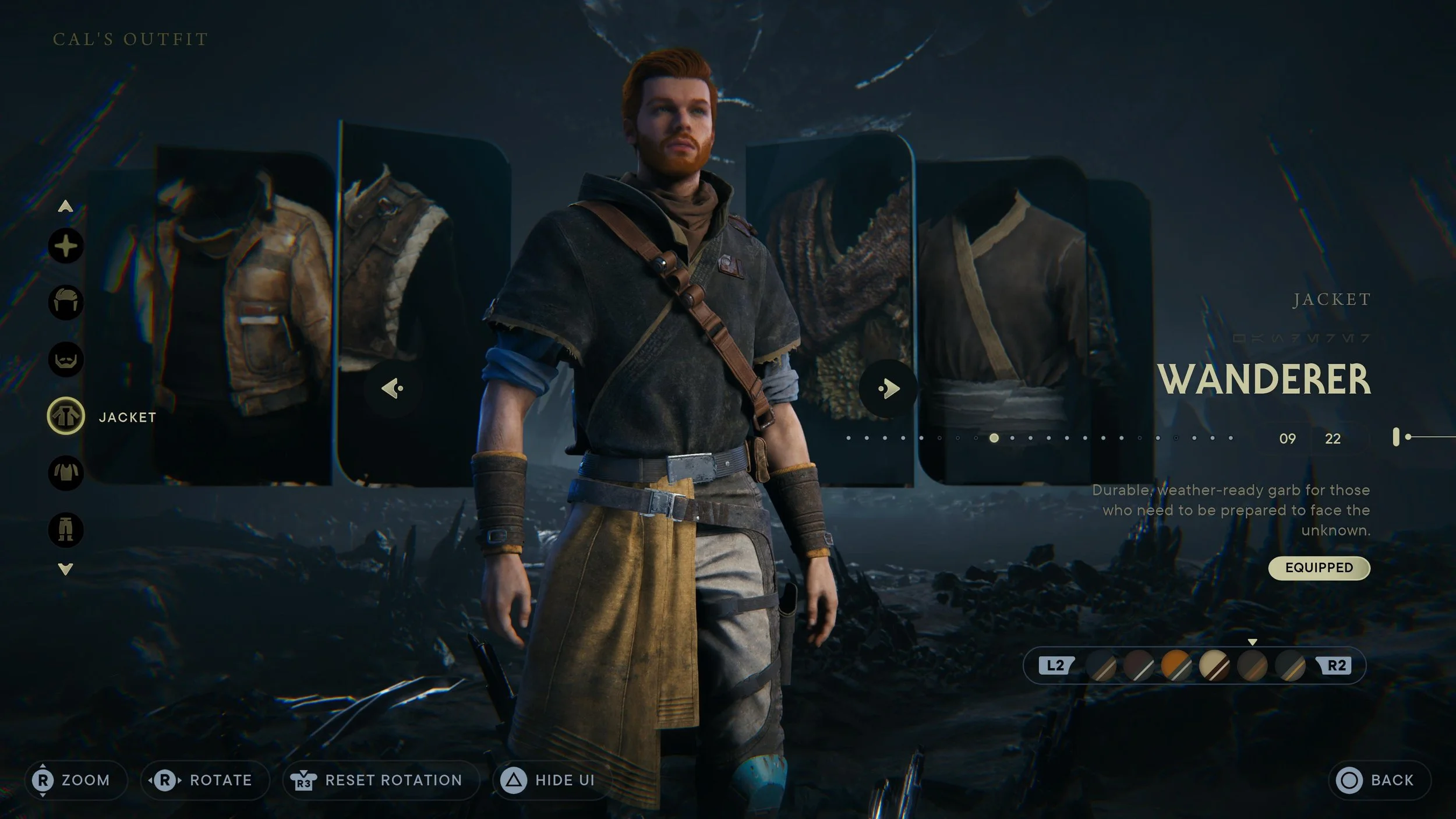Star Wars Jedi: Survivor is a great example of a near-perfect sequel. It builds upon the original instead of completely reinventing it, making it feel like your previous efforts in Fallen Order mattered. It's bigger, bolder, and packs a rather emotional story set in a galaxy far far away. However, Jedi: Survivor brings with it the same launch frustrations of its predecessor, resulting in a game that is often broken at times and littered with numerous bugs that can lead to small bouts of disappointment.
Jedi: Survivor places us five years after the events of Fallen Order, giving us a Cal Kestis who has become a more capable and formidable force user, but also a young man who has certainly been through the ringer. As he continues to make advances against the Empire, each win feels minuscule at best, often resulting in losses that rarely feel like they justify the effort. This is also a Cal who has broken away from his previous companions, each having gone their own separate ways across the galaxy over the previous few years.
That said, it's not too long before the old gang gets back together in some capacity. Greez, Cere, and my personal favorite, Merrin, all return to lend Cal their support through various portions of the story. He will come to rely on them in ways he never knew or expected. Cal will also have a new ally this time around in Bode Akuna. Bode is a great fit for this adventure and is immediately likable. He works well with Cameron Monaghan’s Cal Kestis, fighting alongside the Jedi to take down the Empire.
With advances in tech that certainly push Unreal Engine 4 to its limit, this wonderful cast and its world have never looked better. Given the emotional stakes present here, Jedi: Survivor's facial capture and emotional range for its cast is vastly impressive and outpaces the original by leaps and bounds. This is on top of its voice cast giving tremendous performances with a relatively great script.
With Cal attempting to ensure the Empire's reach is limited, he soon learns of a safe haven outside of that reach; Tanalorr. This planet has a rich and interesting history, one that Cal will become all too invested in as he attempts to discover just how to find this supposed paradise. While the path to finding these answers is nonetheless satisfying, the avenues that make this a videogame can result in some pacing issues and some repetitive trips to a few of the game's locations. While that is a given as Jedi: Survivor is a take on the Metroidvania genre, some locations feel abused a bit too much, even if Jedi: Survivor's addition of fast travel alleviates most of this repetition.
The safe haven narrative is built to provide a fairly lengthy campaign, an experience that is certainly longer than that of Fallen Order, especially when you take in all of the additional side content. While the bulk of the story is well-written and keeps the action largely intense from planet to planet, with a few standout action set pieces, the strongest aspects of its story only take form during the game's final act, resulting in a very powerful and memorable final battle. The lead-up to this is centered around a mysterious figure from Tanalorr’s past. They certainly have a few moments to shine alongside a very intense boss fight, but overall they lacked the depth needed to stand out as a satisfying villain, especially in comparison to the Second Sister in Fallen Order.
Throughout the campaign, you'll visit a few locations; however, it's the planet of Koboh where the bulk of your adventure takes place. Koboh is massive and I wouldn't be surprised if its entire scale is bigger than all of Fallen Order in its entirety. Koboh will continue to reward you as you unlock new abilities and skills, allowing you to force dash through previously impenetrable barriers or grapple toward floating structures that catapult you further along. These skills come with time, allowing Cal to explore more as the game goes on. And as always, Cal will be wall-running and rope-swinging across each and every location, with a few new traversal additions, puzzles, and obstacles to keep these traversal systems consistently fresh.
Koboh is a planet that offers a wealth of distinct environments, from desert plains that give it an almost Old West feel, to forests and rocky climbs, packed to the brim with its own host of monsters and passive creatures to tame. The wealth of secrets here gives Koboh a scale never before seen in a Star Wars game. From secret battles to several difficult Jedi trials, Koboh and its surrounding planets will certainly keep you busy during and well after the credits roll.
While you'll visit its shattered moon and the deserts of Jedha, among a few other places, Koboh consumes the bulk of this adventure in more ways than just through exploration and combat. Koboh is where we meet up with Greez, who has taken over ownership of a bar, the Pyloon Saloon. This acts as a hub between missions. You can collect music to play should you find a suitable musical act to take up the stage in the saloon, as well as take on bounty hunting missions or tend to both a garden and aquarium, should you be able to find individuals to care for them. This aspect of recruitment as you progress throughout the game is a welcomed one, giving a sense of life to the saloon and its accompanying settlement that upon your initial visit felt lonesome and empty. Seeing it come to life feels rewarding and is a series of systems I honestly wasn't expecting here.
As you approach certain moments across the campaign, Cal will learn a variety of new abilities; however, everyone's favorite little droid, BD-1, will not be left out of the same progression. BD can eventually fire out electrical impulses as well as spray a flammable solution, allowing them to aid in granting additional exploration opportunities and uncovering more secrets alongside his best friend, Cal. In addition, Cal can ride various beasts that he has tamed, allowing for quicker traversal that can also give him a boost up with extra height to his jump or the ability to glide great distances. These systems are present across nearly all of Jedi: Survivor's planets, all additionally equipped with the same cable line and elevator shortcuts to allow backtracking to be a rather quick affair. That said, I wish that elevators could be triggered without having to ride them down first.
Throughout all the new upgrades to traversal, or the worlds we will explore, Cal has seen a boost to his lightsaber skills in being able to adapt to additional stances. From double-sided lightsabers to dual wielding to even Kylo Ren's crossguard blade, the options here feel genuinely impressive. My favorite of the new stances is being able to equip a blaster alongside a single-handed blade. It's a nice touch and a welcomed one as we've seen several Jedi wield a blaster before, but few alongside their lightsaber in battle. Each of these stances can be upgraded with additional attacks and tweaks to how they perform.
Cal will also gain a few new force powers, such as being able to lift whole groups of enemies up into the air and then slam them down with incredible force. This ability also works for progression, but it rarely brings the same joy as chucking a stormtrooper with a rocket pack down into the abyss with nothing more than a scream to remember them by. Additional powers gained here are also force sight which allows you to automatically dodge incoming attacks by holding down the evade button, to also force confusion, which causes affected enemies to fight by your side. While this only works for organic foes, BD can eventually slice into droids to offer the same shenanigans to ensue.
Combat certainly feels a bit more polished than before, with a great deal of challenge to put your skills to the test. While a few bosses can feel a tad cheap in a few of their attacks, the collective of powers, stances, and additional tricks up your sleeve can certainly all come in handy. While the enemy variety is remarkably solid, with a wealth of droids, beasts, and raiders to cut down, I have to say my favorite is easily the battle droids due to the hysterical dialogue moments when you force push them off cliffs or pull them in close for a brutal slash of your lightsaber.
While adventuring out across the galaxy in the Mantis is as thrilling as it ever was, Cal will encounter a wealth of collectibles. From data drives to priorite shards, most locations will have some sort of collectible currency to track down. These are used at various shops that can reward you with numerous cosmetics such as hairstyles and outfits for Cal, to paint jobs for BD-1. There are also a ton of options for your blaster and lightsaber, giving you a lot of freedom in what you take into battle.
Throughout my 25+ hours with Jedi: Survivor on PS5, I played with a mixture of both its performance mode and its quality mode. While performance certainly felt smoother, I opted for the quality mode in the end, simply due to the excessive screen-tearing that was constantly in view during its performance mode. Quality and performance both feature ray-tracing to varying effects with some of its use a bit less native than others.
As for the numbers, Digital Foundry themselves have taken a look at what we are getting on the PS5, Series X, and PC, so certainly check out those videos for a deeper dive into what you can expect on the platform of your choice. As this review is based on the PS5 version, let’s take a look there. Jedi: Survivor offers two modes, as mentioned, a performance mode and that of a quality mode, or a resolution mode if you will. Performance mode runs the game at 60fps, but runs at a resolution range of around 648p to 864p, but uses AMD’s FSR 2 technology to upscale that image to 1440p. That said, performance mode rarely hits its 60fps target and usually ranges around 45-50 in most conditions. Quality mode; however, is largely locked at 30fps with considerably more detail and foliage in its environments. This mode is rendered at 1440p natively with its image then upscaled to 4k.
That said, I found both modes to feature a lot of digital noise and some resolution hiccups when dashing or especially riding down some elevators as Cal and the platform would exhibit some incredibly noticeable ghosting. I’ll still argue that Jedi: Survivor is a gorgeous game with some wonderful detail, often breathtaking in its scope, it’s just hard to take it all in when you see a lot of digital noise around character models and some significant frame dips that are a result of all this detail.
If Jedi: Survivor had been a less-than-stellar experience, its host of technical issues would have certainly made this a game that would have been hard to recommend. However, despite its rough edges, this is one of the best Star Wars experiences we’ve had in videogame form. Its cast is extremely memorable and the story dives deep into the emotional complexity of Cal’s life as a Jedi and his relationships with those around him. While its technical problems can get in the way of the experience to a degree, the game itself is such a step up from its predecessor and offers a truly compelling experience that rises above those issues.
Developer - Respawn Entertainment. Publisher - EA. Released - April 28th Available On - PlayStation 5, Xbox Series X/S, PC Rated - (T) Mild Language, Violence. Platform Reviewed - PlayStation 5. Review Access - A review code was provided by the publisher for the purpose of this review.

















Jeff is the original founder of Analog Stick Gaming. His favorite games include The Witcher III, the Mass Effect Trilogy, Hi-Fi Rush, Stellar Blade, Hellbade: Senua’s Sacrifice, and the Legend of Heroes series, especially Trails of Cold Steel III & IV.